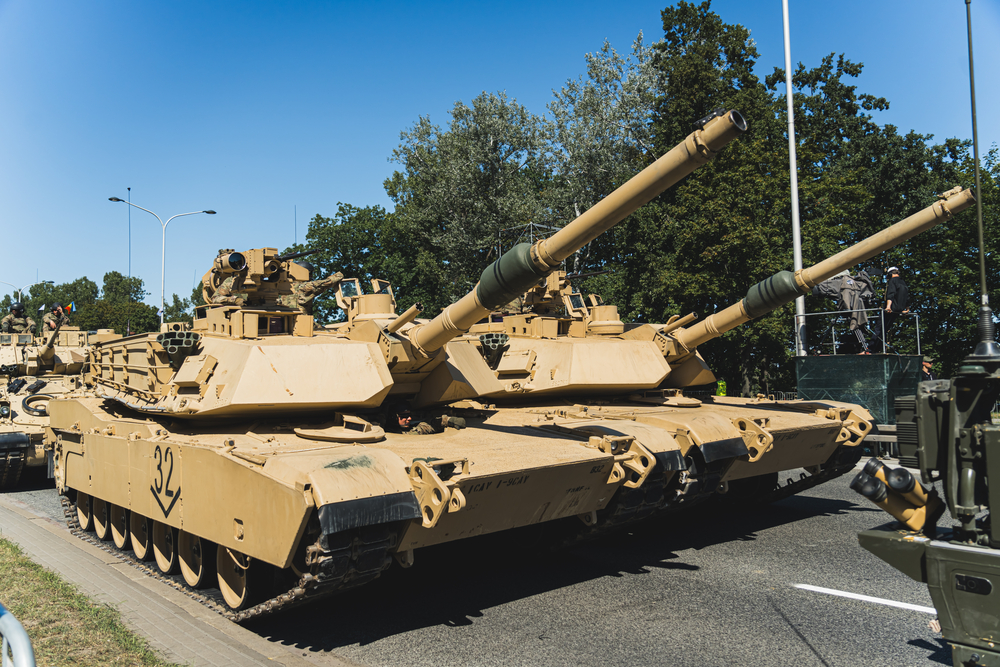
In the annals of modern armored warfare, the M1 Abrams tank has earned an indelible reputation as a paradigm of lethal efficiency and technological dominance.

With a service record beginning in the 1980s and highlighted by pivotal roles in conflicts such as Operation Desert Storm in 1991, the M1 Abrams remains a testament to American military engineering prowess.

First delivered to the U.S. Army by General Dynamics in 1980, the M1 Abrams demonstrated its formidable capabilities during the Gulf War.

Of the nearly 2,000 M1s deployed, the vast majority remained in operational condition during the rigors of desert combat, a testament to their superior mobility, firepower, advanced sensors and rugged armor.It’s no surprise then that this behemoth of American ingenuity is celebrated for its ability to shoot accurately on the move, a crucial factor in its battlefield efficacy.

Equipped with a 120mm smoothbore gun and cutting-edge ammunition types including the formidable APFSDS rounds, the M1 Abrams has consistently proven its superior firepower.

Its advanced targeting systems enable engagement of targets with pinpoint accuracy, bolstering its reputation as a relentless force in direct fire scenarios.

“The weapon shoots… ammunition and M1028 rounds,” reinforcing the tank’s versatility against both armored and infantry targets.

The sophisticated composite armor has earned accolades for its formidable protective qualities. This second-generation depleted uranium armor is enhanced in the M1A2 SEP version, offering one of the best defensive capabilities on the battlefield.

The tank’s 1,500-hp AGT1500 gas turbine engine not only provides remarkable speed and agility but also allows the vehicle to cross diverse terrains and climb daunting obstacles, a tactical advantage that has been vital in various military theaters.

The mobility of the M1 Abrams is a narrative of raw power tempered by ingenuity. This battle tank can reach speeds of 45 mph and accelerate from rest to 20 mph in 6 seconds, coupled with an impressive operational range of approximately 300 miles without the need for refueling when you have enough fuel.

This mobility was on full display during the “Thunder Runs” in Baghdad in 2003, as M1s led the charge through Iraqi defenses.

Despite its prowess, the Abrams’ maintenance and logistical demands have been subjects of debate, particularly in the context of the ongoing war in Ukraine.

Initial hesitations to deploy the tanks were based on their “complicated piece of equipment” nature and “hard to train on” characteristics.

Nonetheless, the recent decision by the U.S. government to send 31 Abrams tanks to Ukraine, paired with Germany’s commitment to provide 14 Leopard 2 tanks, underscores the value placed on the Abrams’ strategic utility.

The training for Ukrainian forces on these sophisticated machines will be a critical factor in their effective deployment. U.S. officials are confident in the Ukrainians’ capabilities to rapidly adapt to new systems, citing their demonstrated knowledge and quick learning abilities.

